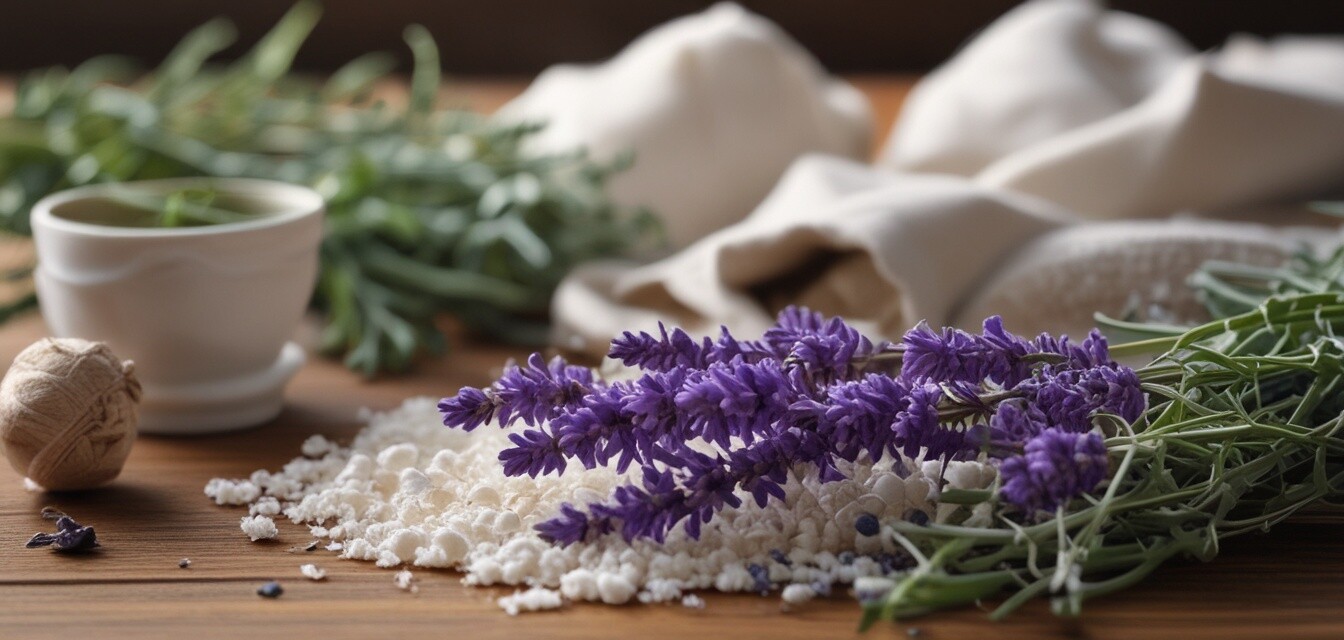
Exploring the benefits of herbal compresses
Key Takeaways
- Herbal compresses can be an effective tool for relaxation and pain relief.
- Various herbs can be selected based on desired benefits, such as lavender for relaxation.
- Homemade herbal compresses are easy to make with basic recipes.
- Application tips can enhance the effectiveness of herbal compresses.
Herbal compresses are a soothing remedy that blends the power of nature with the art of self-care. Traditionally used in various cultures for therapeutic benefits, they can help alleviate discomfort and promote relaxation. In this article, we will explore the advantages of using herbal compresses, share simple recipes for making your own, and provide essential tips for effective application.
What are herbal compresses?
Herbal compresses involve a mixture of herbs wrapped in a cloth that is warmed and applied to the body. This method allows the active compounds in the herbs to be absorbed into the skin while simultaneous heat provides soothing relief. They are often used in spas and wellness centers but can easily be prepared and enjoyed at home.
Benefits of herbal compresses
Herbal compresses offer a range of benefits, making them a popular choice in wellness and recovery routines. Here are some of the key advantages:
| Benefit | Description |
|---|---|
| Pain relief | Heat combined with the properties of herbs can help soothe aches and pains. |
| Relaxation | The fragrant herbs can promote a sense of calm and relaxation. |
| Improved circulation | Heat from the compress can help increase blood flow to the area. |
| Muscle tension relief | The heat and weight of the compress can help ease tight muscles. |
Herbal compress recipes
Making herbal compresses is simple and can be customized based on personal preference. Here are a couple of popular recipes:
1. Lavender and chamomile compress
- Gather dried lavender and chamomile flowers.
- Place them in a piece of cheesecloth and tie it off.
- Soak the bundle in hot water for about 10 minutes.
- Remove the bundle, and gently squeeze out the excess water.
- Wrap the cloth in a towel and apply to the desired area.
2. Eucalyptus and peppermint compress
- Create a similar cloth bundle with dried eucalyptus leaves and peppermint.
- Follow the same soaking instructions for this combination.
- Apply the warm compress to sore muscles or areas of tension.
Application tips for effective use
To maximize the benefits of your herbal compress, consider the following tips:
- Ensure the compress is warm, not too hot, to avoid burns.
- Use in a quiet, relaxing environment to enhance the soothing experience.
- Apply for 15-20 minutes, allowing the heat and herbs to work effectively.
- Combine with deep breathing or gentle stretches for added relaxation.
Where to find herbal ingredients
You can find herbal ingredients at local health stores, online shops, or even your own garden. For more information on using natural products in your wellness routine, check out our articles on herbal remedies and aromatherapy products.
Pros
- Natural and customizable solution for self-care.
- Easy to prepare and apply at home.
- Can be used for various purposes, such as relaxation and muscle relief.
- Affordable compared to spa treatments.
Cons
- Effectiveness can vary based on herb selection.
- Requires proper preparation and application skills.
- Some individuals may have sensitivities to certain herbs.
Conclusion
Herbal compresses are an excellent addition to your wellness and recovery toolkit. With their multitude of benefits and the ability to customize based on individual needs, they serve as a practical option for relaxation and pain relief. By following the simple recipes and application tips provided in this article, you can harness the soothing power of herbs in the comfort of your home.
For more wellness tips, visit our wellness tips section and discover how you can enhance your journey to better health.
